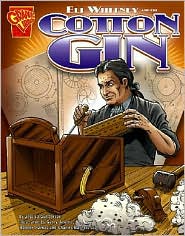Last week, I asked my school librarian for assistance finding some really good non-fiction books for elementary students. She started pointing out some favorite series and showing me the layout of the Dewey decimal system. Then she stopped. She said, "the kids love this one!" and pulled out
The Truth About Poop by Susan E. Goodman and illustrated by Elwood H Smith. This book present hundreds of facts about the taboo subject of excrement. While reading it, I was chuckling and thinking, "hmm, I had no idea." From strange but true animal traits to the history of toilets and toilet paper, this book is packed full of information about a topic I'm sure everyone wonders about, because as we learned in Taro Gomi's book,
Everyone Poops. Elwood Smith's illustrations perfectly compliment the multitude of facts with drawings that bring the facts to life in funny but not gross ways.
When I went to Amazon to see reviews and more information about the book, I found that Susan Goodman is quite the prolific children's nonfiction writer. She seems to publish books about all sorts of topics, including where all the ingredients of grandma's cookies come from or her Ultimate Field Trip series about students visiting other places. She has even published a companion book to this one:
Gee Whiz! It's All About Pee, which is another collaboration with Elwood Smith. Their most recent collaboration is called
See How They Run, which looks at American political campaigns and elections. Check her site to see more of her interesting books (
http://www.susangoodmanbooks.com/books/books.html ).
I am debating ways to use this book. I think it is funny and interesting, so I think it's a great book for students; however, I am not sure that I want to expose myself or their parents to unending conversations about poop that would probably develop after reading this book. However, Susan Goodman includes an afterword about research and further investigation, which I think sheds light on the process of writing nonfiction for students, so perhaps the book can be used to get students interested in research and nonfiction. As of now, I just know I love it and I'm glad the librarian pointed it out to me.
 My reading group read How I Came to Be a Writer by Phyllis Reynolds Naylor. I knew that Phyllis Reynolds Naylor had written the Shiloh trilogy, but I had no idea what a prolific writer she was. As it turns out, she has been publishing her writing since the age of 16. Naylor started with short stories in church publications and then moved on to stories and columns in newspapers. What I found most surprising is how many books she has published. I had actually never heard of any of her other books, except Shiloh. Naylor shares how her initial love for writing has developed into a craft and the ways that the her experiences have affected and shaped her craft.
My reading group read How I Came to Be a Writer by Phyllis Reynolds Naylor. I knew that Phyllis Reynolds Naylor had written the Shiloh trilogy, but I had no idea what a prolific writer she was. As it turns out, she has been publishing her writing since the age of 16. Naylor started with short stories in church publications and then moved on to stories and columns in newspapers. What I found most surprising is how many books she has published. I had actually never heard of any of her other books, except Shiloh. Naylor shares how her initial love for writing has developed into a craft and the ways that the her experiences have affected and shaped her craft.




